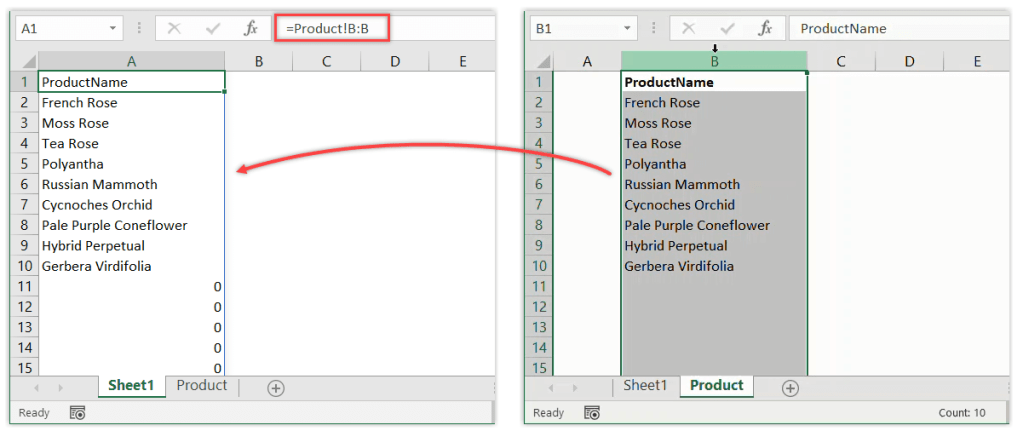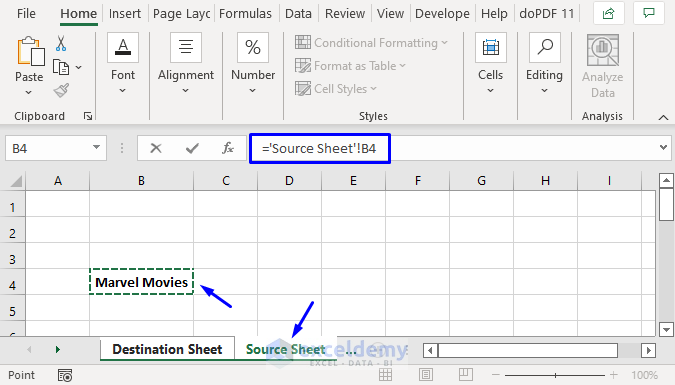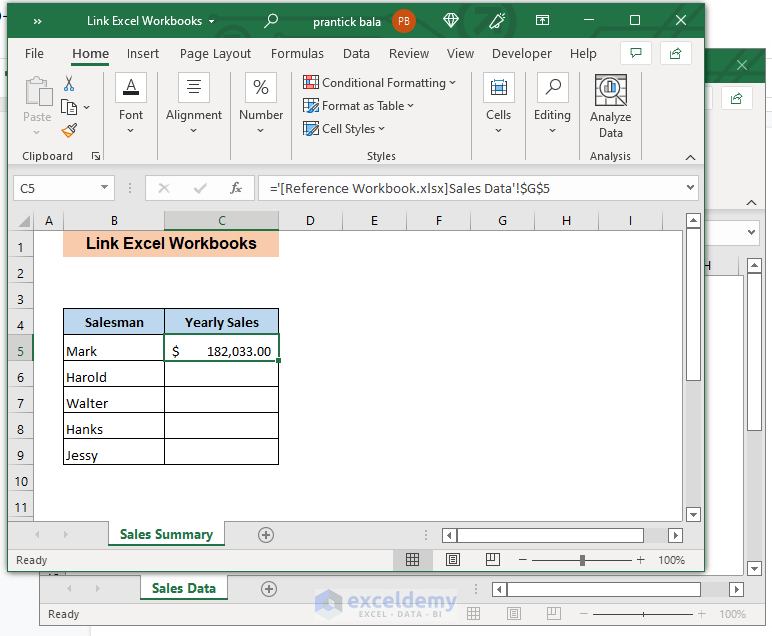Link Excel Sheets: A Simple Guide

In today's interconnected business world, managing data efficiently can be the difference between success and stagnation. Microsoft Excel, with its powerful features, offers a straightforward yet effective way to consolidate data from multiple spreadsheets into one cohesive document. This practice, known as linking Excel sheets, not only saves time but also ensures data consistency and accuracy across different datasets. Here’s your step-by-step guide to mastering this essential skill.
Understanding Sheet Linking

Linking Excel sheets means creating dynamic connections between cells or ranges of cells in different worksheets or workbooks. This connection allows data to be updated automatically in one location when changes are made in another. This can be particularly useful in:
- Consolidating financial reports from different departments
- Integrating sales figures from various stores
- Creating summary sheets from project reports
Setting Up Your Workbook for Linking

Before you start linking, ensure your Excel environment is set up correctly:
- Save all workbooks involved in a common folder for easy access.
- Organize your data with clear headers and uniform formats.
- Know the full path to each workbook for accurate referencing.
How to Link Cells Between Sheets

To link cells between different sheets in the same workbook:
- Open the workbook containing both sheets.
- Select the cell where you want the linked data to appear.
- Type an equal sign (=) to start a formula, then switch to the other sheet.
- Click on the cell you want to link, and Excel will create a formula like:
=Sheet2!A1 - Press Enter, and the linked data will appear in your target cell.
📌 Note: Formulas created with mouse clicks should still use the keyboard for completing the link.
Linking Across Different Workbooks

Linking data from different Excel workbooks follows a similar process, with one extra step:
- Open all workbooks you wish to link.
- Select the cell where you want the linked data to appear in your primary workbook.
- Type an equal sign (=), then navigate to the external workbook using the “Browse” option.
- Select the cell from the external workbook. The formula will look like:
=‘[ExternalWorkbook.xlsx]Sheet1’!A1 - Press Enter to establish the link.
When you close Excel, it will ask whether you want to update the links. This choice ensures you always have access to the most current data.
Managing and Troubleshooting Links

Excel provides tools to manage and troubleshoot links:
- Edit Links: Found under ‘Data’ > ‘Edit Links’, this allows you to manage, update, or remove links between workbooks.
- Updating Links: You can manually update links or set them to update automatically upon opening a workbook.
- Breaking Links: If you want to convert linked data into static values, you can break the link from ‘Edit Links’ or by converting formulas to values.
Problems often arise when linked workbooks are moved or renamed. Excel will report broken links, which you can then fix by reestablishing the correct path:
🔧 Note: Use 'Edit Links' to update the workbook path if files are moved or renamed.
Advanced Techniques for Sheet Linking

For more complex data scenarios, consider these advanced techniques:
- Dynamic Named Ranges: Use Excel’s Name Manager to create references that adjust automatically with data changes.
- Power Query: This tool allows you to connect, combine, and shape data from various sources including other Excel files.
- External Data Functions: Functions like ‘INDIRECT’ and ‘GETPIVOTDATA’ can be used to fetch data dynamically from external sources.
Summing Up

Linking Excel sheets streamlines workflows by consolidating data from multiple sources into a single, easy-to-read document. Whether managing financial data, project milestones, or sales reports, Excel’s linking capabilities enable real-time updates, improve data accuracy, and enhance reporting efficiency. This guide has covered the basics of setting up, managing, and troubleshooting linked Excel sheets, making it clear that with a little practice, you can leverage Excel’s linking functionality to its full potential.
Can you link sheets within the same workbook?

+
Yes, you can link sheets within the same workbook. By using formulas like =‘SheetName’!CellReference, you can reference data from one sheet to another within the same Excel file.
What happens if the linked workbook is closed or moved?

+
If the linked workbook is closed, Excel will try to update the links next time you open the workbook containing the links. If the file is moved or renamed, you’ll need to update the path in the ‘Edit Links’ dialogue.
How can I avoid broken links in Excel?

+
To avoid broken links, ensure all files are stored in a common, accessible location. Use relative paths when possible and regularly back up your workbooks. Also, use ‘Edit Links’ to update or repair links.
Is there a way to automatically update links when changes are made?

+
Yes, you can set Excel to automatically update links by checking ‘Update links on open’ in the ‘Edit Links’ dialog box. This will update linked data whenever you open the workbook.